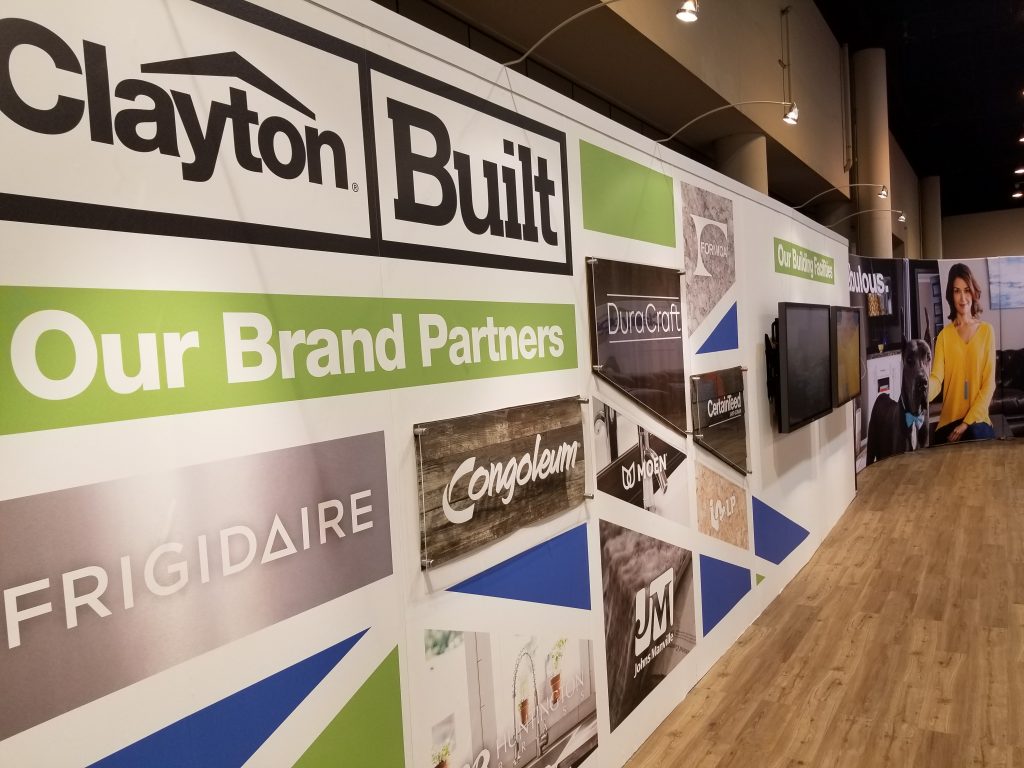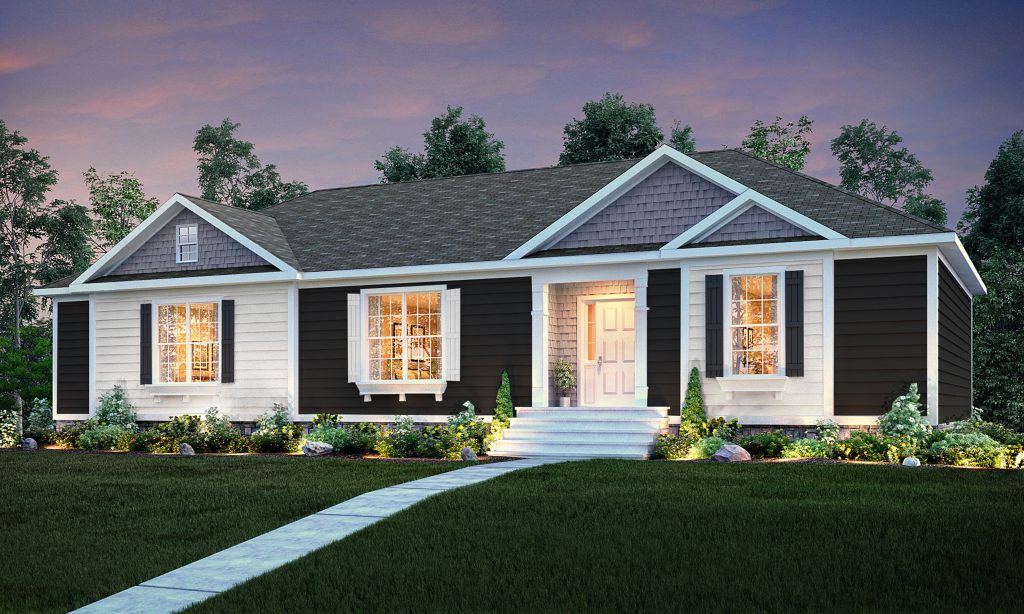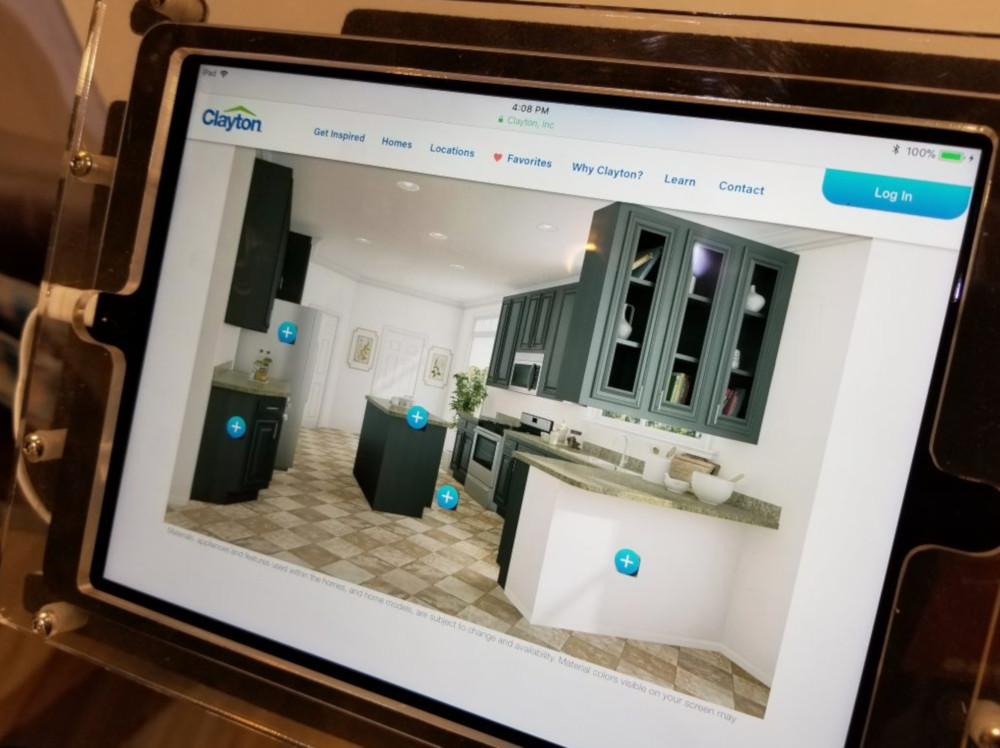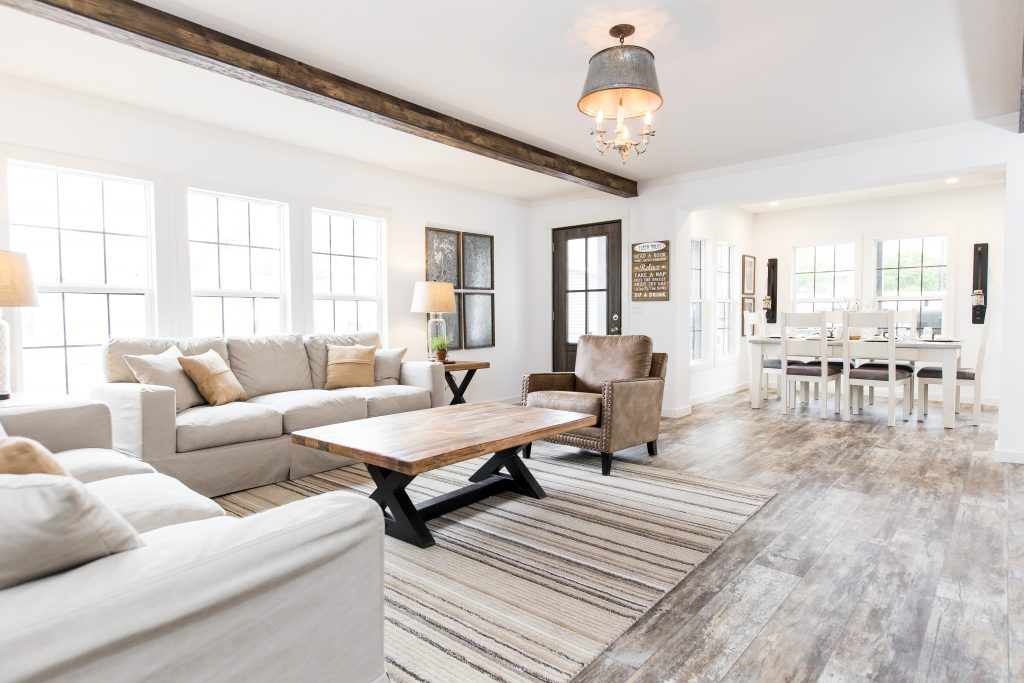Backstage at the Berkshire Hathaway Investor Meeting, Kevin Clayton Reveals His Intentions for The Home of the Future
Kevin Clayton is a man on a mission.
The factory-built home empire his father Jim Clayton built from the mid-’60s is in a unique position today. It’s been 15 years since Warren Buffett rolled Clayton into the Berkshire Hathaway portfolio.
“It’s been better than I expected,” Clayton said of the Berkshire Hathaway relationship. “It’s not just a matter of access to capital.
“I can call Warren any time, and he will pick up,” Clayton said. “I say ‘Do you have a moment?’ and he will say ‘I have as long as you need’.”
Clayton commends Buffett for going on national news to defend the industry, for pointing to its value as the only form of unsubsidized affordable housing. His influence has done as much for the industry as anything in validating the place factory built housing holds.

What is at Stake for Kevin Clayton and the MH industry?
Median price for traditional site-built homes is steadily approaching $400,000. Home ownership is at its lowest in 50 years. And retiring Baby Boomers and upcoming millennials need the right place to live.
These factors along with the industry initiative to get financing, zoning, and appraisals on par with site built put the manufactured housing industry in an opportunistic position. But Kevin Clayton won’t concern himself with greater share, not when the company already owns better than 46 percent of the market. It’s the bigger picture that matters.
So, Kevin Clayton is a man on a mission for his industry. For his industry, and his parents.
He points to the idea of factory-built homes that have all the characteristics, look and feel, of traditional site-built homes, able to be placed seamlessly in residential neighborhoods along their site-built counterparts.
“This is what my dad and I have dreamed about for our entire careers,” Clayton said backstage at the annual Berkshire Hathaway Investor Meeting in Omaha Friday. “This is the legacy we want to leave on the industry. And I predict a year from now, we will be able to point to the neighborhoods where this is happening. And there’s no reason it shouldn’t happen.”
“The cool thing is there’s a merging of building on site and building in a factory. All builders are looking to our industry for answers,” he said.

What Media Means to Kevin Clayton and His Company
Clayton very recently launched a media campaign bent on waking potential customers to the idea of factory-built homes. The initial TV commercial espousing the question “Who’s laughing now?” has garnered 37 million views.
They’ve shared the idea of “Have it Made”, and the edgy “Prefabulous”, “Sustainabling” and “Affordabliss” monikers to their target markets.
“It’s elevating our industry in a big way,” Clayton said.
“We were on national football, and we’re getting ready to run in the next few months all the way through Thanksgiving again,” he said. “This time it will be national football but also really targeted at the buyer-decision maker in the household, who many times is the woman of the house.”
The design of the campaign was to elevate all builders, home centers, community owners and homeowners. The drive is to increase the percent that manufactured housing represents in all new housing starts. The industry always has held eight to 10 percent of the new home market.

Angling for the Sentiments of New Home Customers
These industry initiatives are improving the perception of manufactured housing and causing Clayton to upgrade all 40 of its home building facilities. Kevin is encouraging other industry pros to do the same which in turns improves the team member experience resulting in a better customer experience. All this is part of elevating the industry.
“That ties into what our big aspirational goals are, opening doors to a better life,” Clayton said. “We really do want to make homes more affordable and more available for everyone.
“There absolutely is an affordable housing crisis out there,” he said. “The stars are aligning for this industry on a number of fronts right now, and it’s why the GSEs and so many others are really listening to us and want to be part of the solution to solving the low homeownership rate in our country. With rising interest rates and land prices, site-built housing is not in a position to help like manufactured housing.”

How Clayton Can Attract the Emerging Buyer
For the first time in years, Clayton opted to skip bringing a new model home to the annual shareholders meeting. Rather, they’re pitching their new technologies that help put a potential buyer in a house. The Home Touch™ touchscreen technology being introduced to retail locations this summer, allows shoppers to have a virtual experience, swap out floor plans, and view photos of other home features.
The new technologies connect potential customers to their dream home in a real way much earlier in the home buying process than we’ve seen from this or any other sector.
“I’d like to see our industry stay focused on this New Class of MH which includes the exterior features that the GSE’s, appraisals, and zoning officials want to see. We need to be disciplined and innovative to make these features affordable so MH can be treated on par with other forms of housing. That home with the price tag on it right at the front of the home center facing the highway without any discrimination in how it is financed or appraised will draw a whole new buyer in addition to the important customers we serve today.” – Kevin Clayton, CEO of Clayton Homes
New Buyers Have Different Needs and New Expectations
Millennials, clearly, are a major focus for Clayton and the industry.
“The good news is they’re getting older and having children,” Clayton said of the younger buyers. “They don’t have the same bias against the industry older buyers might have. They are starting to buy homes. And they will buy in a big way, but they don’t want to buy in the same way.
Millennial homebuyers and many others will gravitate to the My Clayton Built Home app, which is currently in development. When released, it will follow those buyers through their path to ownership of that home. The app assists the buyer no matter where they buy or what they buy. It provides updates on the home, maintenance and planning.
Even before the home is placed, the app will tell the customer where their actual home is on the line, in photographs and otherwise to convey how construction is coming together, the processes and materials being used.
“And here’s the thing,” Clayton added. “We know that what the millennial buyer is going to do is share that experience socially, posting pictures and comments, which is great for us and the industry.”











